Christmas trees 101: Site selection and modifications
Choosing a suitable site for Christmas tree production prior to planting will set your farm up for success. If your site has less than ideal properties, having management strategies to minimize those problem areas can still be successful.

Michigan is seeing a surge of new interest in Christmas tree production after decades of declining acreage. Are you thinking of expanding your Christmas trees production or planting for the first time? Choosing a good site to plant with will prevent many problems in the future. “Christmas trees 101: Soil test to optimize production” discussed how to take an accurate soil sample to characterize your site. Here we’ll discuss characteristics that make for an ideal Christmas tree production and strategies to address deficiencies in non-ideal locations. These strategies should improve seedling survival, establishment rates and farm productivity.
As part of the site selection process, Michigan State University Extension recommends checking the U.S. Department of Agriculture’s (USDA) Web Soil Survey to identify the future site’s soil properties. The Web Soil Survey is a free, online system produced by the USDA Natural Resources Conservation Service (NRCS) that allows users to access a complete soil survey for a given parcel of land. From the Web Soil Survey Map, box in your projected site (Photo 1), then click the soil map tab, which will identify the different soil types present at your farm (Photo 2). To better understand each soil type, click on the map unit name.

Two key parameters to look for in the soil series description are the soil drainage class (Photos 3 and 4) and “Use and Vegetation.” Sites that normally support upland species (e.g., pines, oaks, sugar maple) are well-drained and better suited to most Christmas tree species than sites that are dominated by bottomland species, such as white cedar.
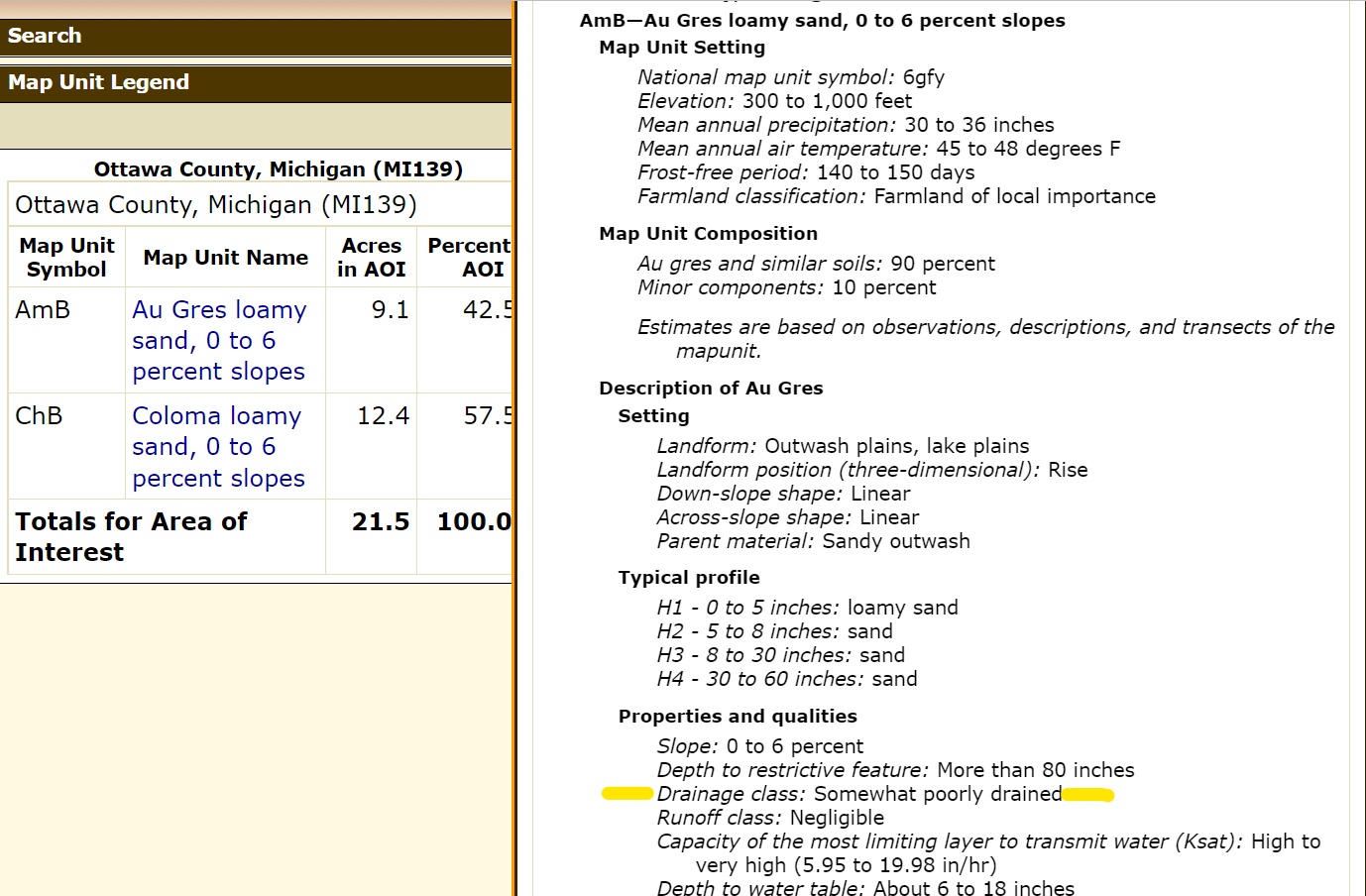
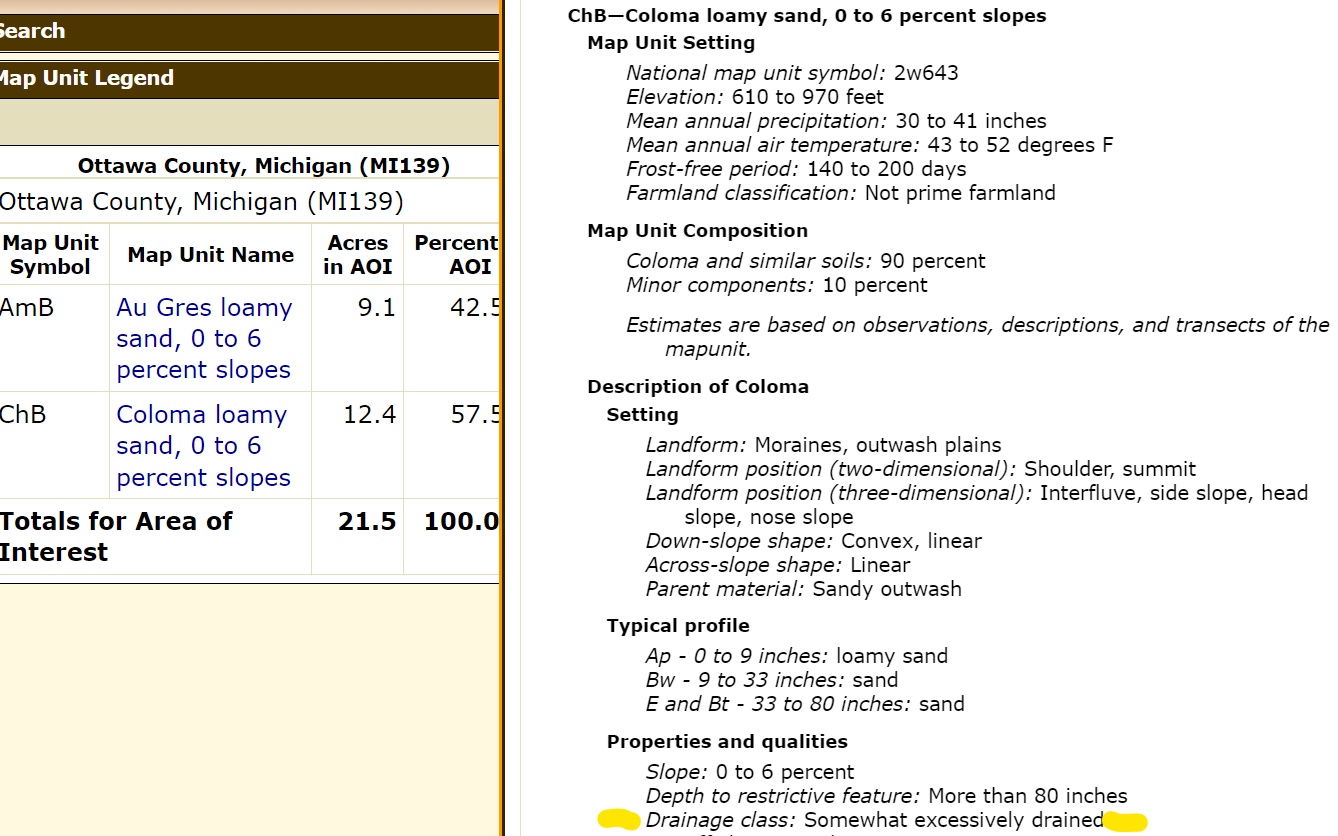
It is also valuable to make field observations prior to planting. Photos of our example field were taken after moderate rains and show differences in drainage classifications between somewhat excessively drained Coloma loamy sand and somewhat poorly drained Au Gres loamy sand (Photo 5).
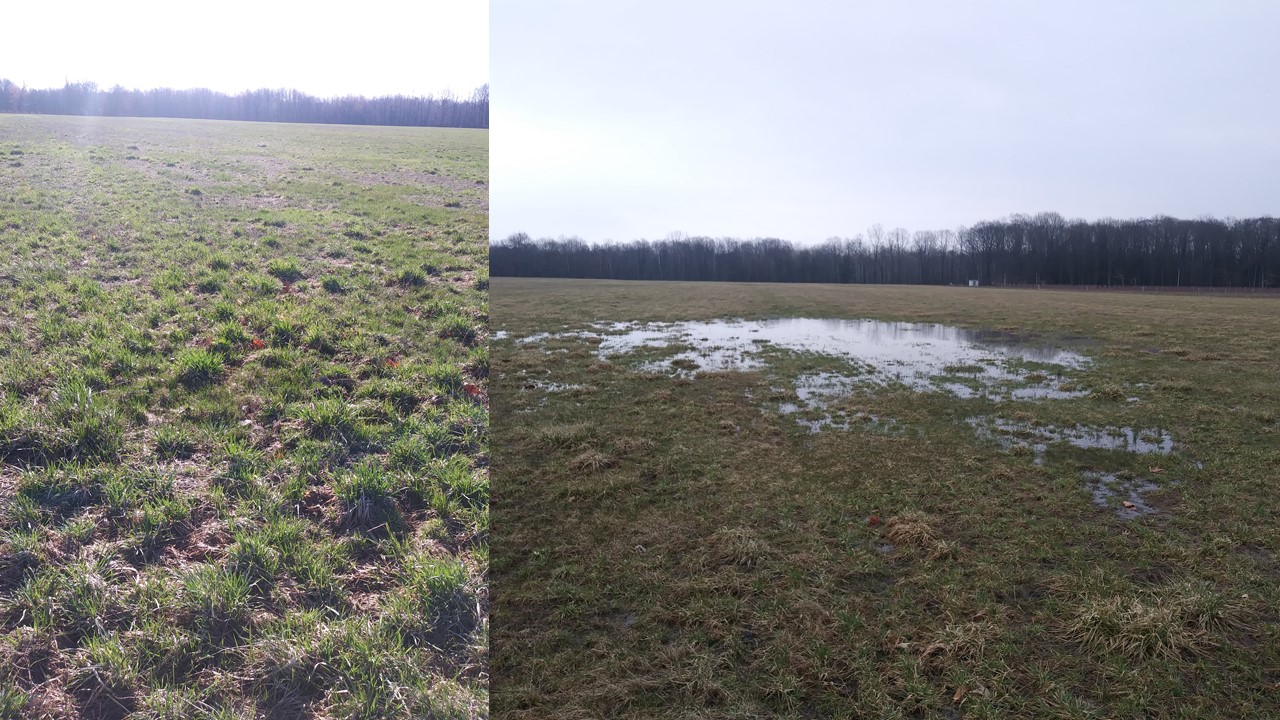
Having a well-drained soil is critical for Christmas tree production. Poorly drained or heavy clay soils will lead to poor tree growth, high mortality and increased incidence of root rot diseases (Photo 6). Sites with poor drainage should be avoided when possible. If not possible, other management decisions should be considered. Choosing a tree species selection that is more tolerant of wet sites, adding surface or sub-surface drainage, or planting into a raised bed system (Photo 7) may help alleviate issues associated with poorly draining soils.

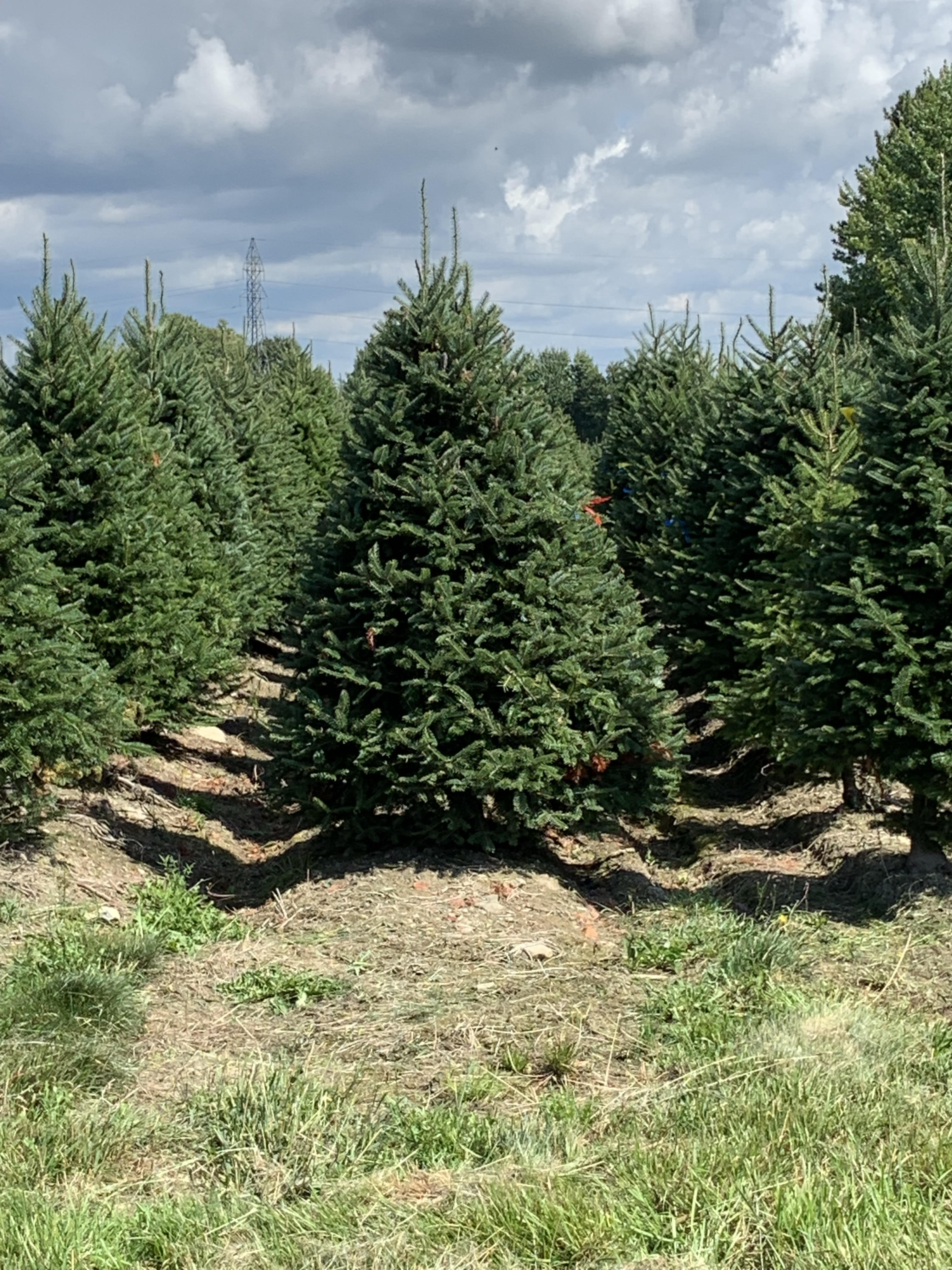
Another key characteristic is soil pH, which can be assessed with a soil test. Nearly all Christmas tree species perform best on sites with an acidic pH (i.e., soil pH less than 7) and some, such as Fraser fir, have their best growth and color when soil pH is 6 or less. You can reduce soil pH by applying elemental sulfur or fertilizing with ammonium-based fertilizers, but starting with pH that is close to the optimum for the species offers the best chance to produce quality trees.
Site selections that include excessively drained, sandy soils can also present challenges. These locations have reduced water and nutrient holding capacities compared to loam soils. This can also lead to poor tree survival and slow growth. In these situations, consider supplemental irrigation to increase the water availability (Photo 8). Sandy soils may also benefit from split applications of fertilizer. Adding organic materials can improve the suitability of sandy soils for production. Repeated incorporate of cover crops, mulch, manure or wood chips can improve the organic matter over time (Photo 9).
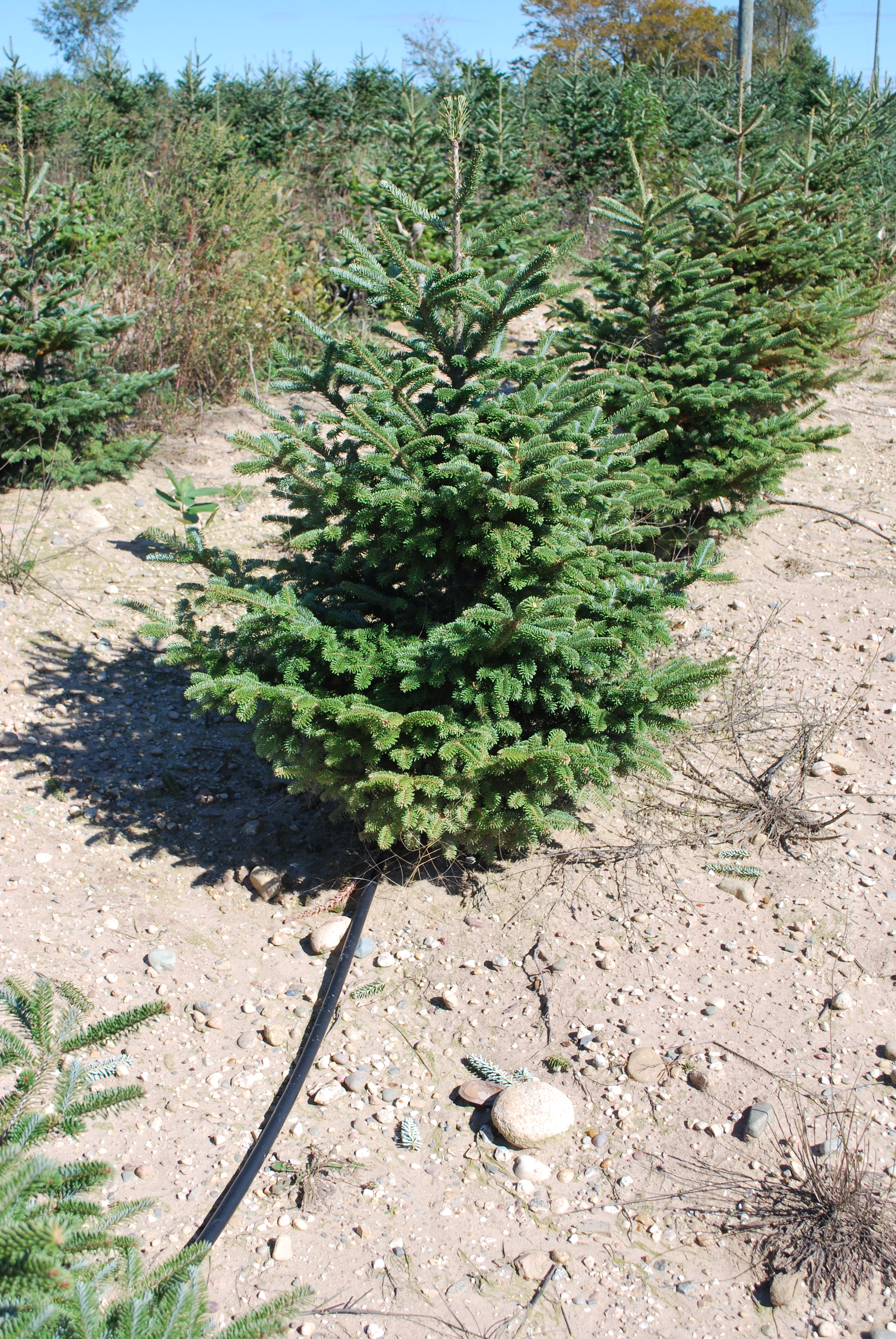

Choosing a good site for a Christmas tree farm will set you up for success. A well-drained loamy soil is the ideal location for quality Christmas tree production. If those soil types are not available, implementing a plan to adapt to your site’s limitations can also be useful in producing quality Christmas trees.



 Print
Print Email
Email

